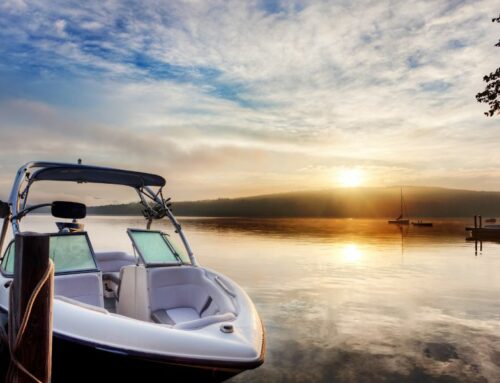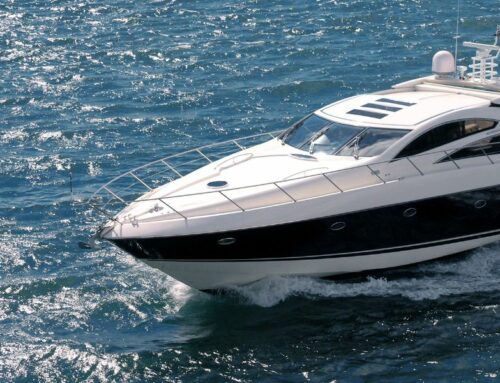
As you prepare for a long day of boating, you might be tempted to bring lots of fancy fishing equipment and perhaps a couple of passengers aboard. But are you staying within your boat’s capacity limitations? And why is that important to do?
Well, an overloaded or unbalanced boat can become unwieldy in the water, leading to all kinds of issues. You can learn about your boat’s capabilities from its capacity plate.
What and Where is the Capacity Plate?
Located near the helm (or on the transom), the capacity plate is an informative plaque that denotes specific capacity limitations. This vital information can also be found in your boater’s manual.
All boats are different, but most capacity plates will tell you how many passengers you can have aboard at once, the total weight for passengers, the total weight combined (including passengers, gear, and motors), and the recommended maximum horsepower. (Note: these limitations are for fair weather. More on inclement weather later.)
An overloaded boat is much harder to control, so adhering to these limitations is in your best interest. It eliminates unnecessary stress on your boat and reduces the chance of accidents, casualties, or fatalities.
What is the Best Way to Avoid Overloading Your Boat?
To prevent an overloaded boat, follow these recommendations:
Always Abide By Your Capacity Plate. It may be tempting to add in more gear, but you’ll regret the choice when your boat starts leaning. Sort through your equipment routinely and make sure you haven’t packed unnecessary items.
Pro-tip: A personalized checklist helps you stay organized with what you really need for your day.
Stick to the Passengers You Planned On. Don’t invite or pick up extra passengers en route unless you have more than enough capacity left.
Go Extra Light in Bad Weather. If the weather looks iffy and the waves are getting choppy, your boat will already have enough to handle. Consider leaving the extra gear or passengers on land.
Even Out the Weight Distribution. To minimize leaning, distribute weight evenly on your boat. If one side is carrying too much, your boat could become even harder to control, and you might even lose some precious equipment to the water.
The Boat Capacity Formula
If your boat doesn’t have a capacity plate or cannot locate your boater’s manual, you can use the boat capacity formula to understand your boat’s limitations.
To do this, first, multiply the length of your boat (in feet) by the width (also in feet). Then divide that number by 15. Your final solution is the maximum number of passengers you should have on board.
Let’s say you have a boat that’s 10 feet long and 7 feet wide – equaling a total of 70 when multiplied. When we divide 70 by 15, we wind up with 4.6. From there, we can round down to 4 passengers on the boat.
Remember, the boat capacity formula is only an estimate, designed to be used as a last resort! It is always better to adhere to the capacity plate or boater’s manual.
Under Federal Law, Which Type of Boat Must Have a Capacity Plate?
Federal law requires single-hull, motorized boats that are less than 20 feet long to have a capacity plate. This rule does not include Personal Watercrafts (PWC) or sailboats.
All the Boat Tips and Tricks You Want From the Smooth Moves Team
Are you a fishing fan? A boating fanatic? We are, too! Stay tuned to our blog for routinely-updated boating insights, fishing tips, and all things Smooth Moves.






